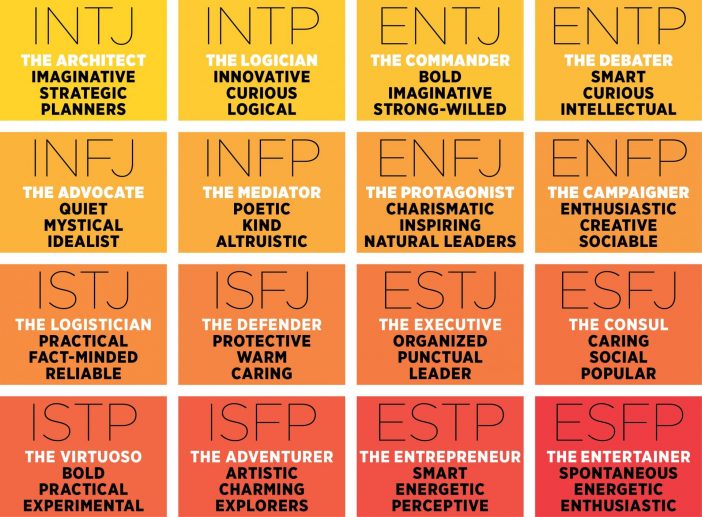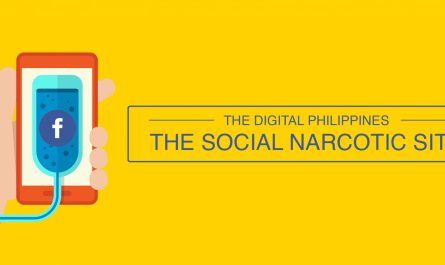If you were not living in a cave during 2019, you’ve probably already come across the “16 personalities” website. Available in 37 languages, it offers a free and complete MBTI test, as well as very detailed description of your result, that is, your personality type.

As you read this first paragraph you probably wondered “what the hell is MBTI?”. And that is exactly why I am writing this article today. Millions of people have used “16 personalities” to discover more about themselves. If you read my article from last week, you must think I should be pleased so many people are engaging in self-knowledge activities. And honestly, you’re not wrong. I am more than happy the creators of this website managed to popularize personality tests, especially my favorite, the MBTI. However, this doesn’t completely satisfy me, and I will tell you why.
THE PROBLEM OF PERSONALITY TESTS
I don’t have anything against personality tests. I actually quite like them. However, I strongly believe they aren’t enough per se. When you go on the “16 personalities” website, or any other of its competitors, you will only get a self-centered vision. You will understand how your type acts in certain situations, what kind of partner you are, or even which celebrities share similar traits with you. At this point, you’ll already be more self-conscious than most humans on this planet. However, knowing your personality type is only relevant if you manage to understand its components and therefore, what makes you different from your neighbors. What I am trying to say is, you have to understand the entire model before you can understand your particular type. Think about it: things out of their context rarely make sense. If I gave you the Gross Domestic Product (GDP) of France, it would not mean much to you. If I added its percentage of evolution since last year, or the GDP of the USA as a comparison, then you could start having an idea whether or not this number is high or positive. Only when I explain to you why and how other people differ, you can truly understand where you stand as a human being, and make the most out of this information.
WHAT’S THE MBTI?
The Myers-Briggs Type Indicator® (MBTI) was created in the 20th century by Isabel Myers and her mother, Katharine Cook Briggs. Developed through three decades of research conducted on thousands of people, the objective of the MBTI is to provide people with a description of their best-fit type, through the use of a questionnaire. It has been available for practical applications since 1975. Unlike some other personality types’ models, the MBTI is not only based on professional situations, but relates to everyday situations, whether they are personal of professional. As stated on the official website, “understanding your type can help you (a) appreciate your own strengths, gifts, and potential developmental needs, and (b) help you understand and appreciate how other people may differ from you”. And this last point is exactly what I was talking about earlier. Websites such as “16 personalities” emphasize on the first objective but completely leave out the second.
UNDERSTANDING THE BIGGER PICTURE
Now that we know a bit more about the history and objectives of the MBTI, it is time to understand how it truly works. If you did the test, you know that the result gives you a series of five letters, with a percentage for each. This part, though being the most unclear of the result page, is the most important. For the purpose of this article, I will focus on dissecting the first four letters, as they are the core of the MBTI. The fifth letter is not part of the original model, but is used by some non-official institutions, including “16 personalities”. If you would like to know more about the fifth letter, let me know in the comments below.
The first thing you need to know, is that the MBTI is based on a system of preferences. For each of its four categories, there are two possible choices. You are either one or the other, and the one you are, corresponds to a letter that will then be a part of your type name. That leaves us with, you guessed it, 16 potential results in the end.

People are sometimes bothered by this binary vision of personality. What they usually don’t understand is that, your corresponding trait is simply the one that you naturally prefer, or in other words, the way you would act in a world free of constraints. It’s your ideal. It doesn’t mean you are not capable of the opposite; we all are. For example, it’s not because you are naturally spontaneous that you cannot force yourself to follow a schedule. However, ideally, if you didn’t have any responsibilities, you probably would organize your life as it comes. Do you see what I mean?
The second key idea is that, as I mentioned, your personality type comes with percentages. It means that for each trait, your preference is more or less strong, leaving room for some nuances within types. Two people could be respectively slightly and strongly Extrovert (E), they still would have the same personality type in the end, if their three other letters matched.
THE FOUR MAGIC LETTERS
Now on to the real reason you’re here: understanding what each letter actually means.

The first category is the “favorite world”. It is related to the world you prefer living in: the outer one, if you’re an Extrovert (E), or your inner one, if you’re an Introvert (I). Those are not to be mistaken with boldness and shyness. The idea is more related to the world you get your energy from, and the way you think. If you recharge your batteries while being surrounded by others, you are probably an Extrovert and vice versa. Extroverts are also likely to talk more than Introverts, as they use talking to order their thoughts: they think as they speak. Furthermore, if you’re an Extrovert you seemingly don’t take decisions without consulting other people first, and you are able to make up your mind shortly after a discussion. It would not be possible for an Introvert, who always needs to give it some more inner thoughts first.

The second category is “information”. It deals with the way you analyze your environment and perceive information. If you focus more on the here and now, on things you can sense and see, then you are probably Sensing (S). If so, details matter to you and you need concrete statements to understand. On the opposite, if details bother you and you’re a big fan of abstract theories, you must be iNtuituve (N). INtuitive people love starting projects because the perspective of an unlimited field of possibilities excites them as much as it scares the Sensing people. An easy test to know which of those two types you are, is to take a picture and to spontaneously describe it. If you are Sensing, you probably will list its components and details. On the contrary, iNtuitive people will give a general statement and start making assumptions on what is going on, on the picture and why things look a certain way.

The third category is “decisions”. It explains how you take your decisions and which criteria you value the most when choosing something. If you rely on logic and consistency, that is if you listen to your head first, you are probably Thinking (T). However, if you pay a particular interest to people and special circumstances, that is you listen to your heart first, you are probably Feeling (F). Feeling people are more irrational and tend to take criticism personally. Again, consider that this is a system of preferences and everyone is capable of both. Of course, when it comes to our loved ones, we are all guided by our heart. But when it comes to work, do you prefer reaching your goals, even if you might hurt someone’s feelings? Or will you always put humans first?

The fourth and final category is “structure” and it deals with the level of structure you need to correctly function. If you expect your workspace to be tidy and your holidays to be planned in advance, you are probably Judging (J). Despite its confusing name, it doesn’t have anything to do with being judgemental. It simply means that you love having a routine, and you will do what you have to do, before doing what you want to do. You also work at a steady pace. On the contrary, if you work best in burst of energies or at the last minute, you are probably Perceiving (P). Perceiving people like being spontaneous and flexible. They value their freedom the most, and as far as possible, will do what they want to do before what they have to do.
PUTTING THE LETTERS TOGETHER
Now that you have read these descriptions, you probably have an idea of which four letters match your personality best. You can still do a test, to get some more certainty and access your exact percentages. But at least, you already know the components of your type. By doing so, you can understand how people relate or differ from you. Trust me, knowing this, you will suddenly understand why you cannot seem to work with this particular colleague, or why your last relationship didn’t work out. I am not saying that every social relation’s failure or success is related to personality types only, but simply that it is possible to identify patterns.
I hope that you now have a clearer vision of how the MBTI works, from an internal as well as a social perspective. If anything remains unclear, please let me know in the comments below. It would be a pleasure to answer your questions or even make a new article out of them.
You can also tell me: did you already know your type before? If yes, did this article help you understand it better? If you didn’t, do you now have an idea of your type? Which one is it?
Don’t forget to follow me on LinkedIn to stay informed of the publication of my new articles, one every Tuesday.
And until then, take care (especially in this complicated time)!




Hello, thank you for the great explanation! I think I’m an ISTJ. What’s your type actually?
Hello Marek,
Thank you for your feedback. I am glad you liked the article!
It’s a great question actually. It’s true I haven’t shared my type with you. I am an ESFJ!
Have a great day and see you soon hopefully,
What a comprehensive, well-researched and easy to understand article about the MBTI, Juliette! I already knew about the 16 personalities test beforehand, as part of an HR assessment from one of my previous employers, yet didn’t know about the scientific concept behind it. Do you think people with opposite personality types match the best or is it better to surround yourself with people of approximately the same traits? For me, I think it is a little bit of both. Looking forward to new content next tuesday!
Hello Katharina,
Thank you so much for the kind words, I’m really happy you liked the post.
I think you can definitely learn from people that are different, it’s very refreshing. But my closest friends are funnily all quite similar to me.
See you next week,
Hi! I’ve learned about this in class actually, but it was great to read about it again and your description definitely refreshed the concept very well for me. Very well done! I think I’m ENFP.. 🙂
Hello Olivier,
Thank you so much for your feedback! You must be very creative with such a type.
Have a nice day,
Hi Juliette,
Great breakdown, I’ve done this test a few times, once in university and once during a corporate retreat. I am “consul”, which makes sense.
I did want to know if you have investigated the “strengths finder” by Gallup? This test really helped me understand my professional and personal strengths. I also found it to be a bit more “put to action” than Myers Briggs.
Thanks for sharing!
Hello Nisha,
Thank you so much for your feedback. I am consul too, how funny!
I’ve never heard of this model before, but will definitely check it out. Thanks for the suggestion!
Have a nice day,
Super interesting and well written, thanks Juliette !
I had done this test you mention online, but actually didn’t know it was related to Myers Briggs.
I definitely agree with the fact these online tests are not enough to analyse a person, because we may have a biased vision of ourselves, and it is sometimes very difficult to know what we would do in a certain context. I think making several person who know you very well do the test for you could also be interesting to check the results.
Finally, I also got “consul”, but a lot of my friends who did the test got the same result, so I am not convinced about this online test, and I think it would be a very interesting challenge to find new frameworks for performing the Myers Briggs evaluation 🙂
Hello Justine,
Thanks for sharing your insights, they are very valuable! I like the idea of having close people doing the test for you. Even though no one is 100% themselves when surrounded by others, right?
New frameworks would definitely be interesting! If you discover any, please share!
See you soon on the blog hopefully,
Juliette,
I talked about it to my family few days ago, and my father told me something interesting : try this test for yourself, but also make your friends do the test for you ! I’m curious to see if my friends see me like I think I am.
I love this test, especially for understanding how my collegues work.
Thank for your article
Hello Léa,
Thank you for your feedback. Understanding how others perceive you is definitely a big part of self-knowledge!
Using it in the workplace is very useful. You can read my article dedicated to this topic if it interests you.
See you very soon hopefully,